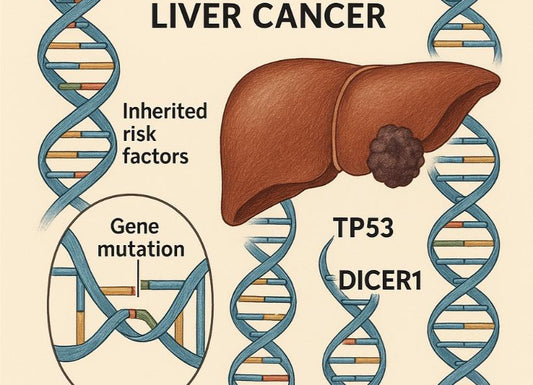What Indicates Renal Tubular Acidosis?
 Written By
Yusela Aquino
Written By
Yusela Aquino

Renal Tubular Acidosis (RTA) is a condition where the kidney’s ability to filter acid from the body becomes significantly reduced. The result creates an acid-base imbalance in the blood, leading to acid build-up and decreased blood pH. Renal tubular acidosis symptoms can vary depending on the exact type of the condition, though an accurate diagnosis is relatively simple and happens through testing urine or blood pH, and electrolyte balance. To see more information about renal tubular acidosis, read the article below.
What is Renal Tubular Acidosis?
Renal tubular acidosis, or RTA for short, occurs when the kidneys become unable to effectively filter out acids from the body. This results in blood pH falling outside the normal range. The subsequent increase of systemic acidity in the body leads to a more general condition called acidosis.
As kidneys serve as the primary detoxifying organ in our bodies, any situation where renal function is impaired should never be taken lightly. As such, RTA is a precursor for many more serious conditions resulting from the body’s acid-base balance becoming disturbed, including chronic kidney disease, making proper diagnosis crucial for prevention and adequate treatment.
Symptoms of Renal Tubular Acidosis
RTA symptoms include:
- Muscle weakness
- Poor physical reflexes
- Paralysis
- Bone weakness and pain
- Osteomalacia
- Irregular heartbeat
- Abdominal pain (for type 4 RTA especially)
Important to note here is that in many cases, renal tubular acidosis shows no immediately perceptible symptoms. However, once symptoms are reported, doctors can refer to a range of indicators to confirm or rule out renal tubular acidosis, whether the test is performed in a lab, or the patient relies on an at-home kidney health test.
These are the potential indicators for RTA:
- High pH in urine
- Low blood pH
- Abnormal electrolyte levels, including hypokalemia
- Abnormal creatinine in urine
- Proteinuria
How Does Renal Tubular Acidosis Cause Hypokalemia?
The exact mechanism depends on the type of RTA. In essence, however, the gradual decrease in kidney function causes them to secrete excess amounts of potassium into the urine.
When left untreated, renal tubular acidosis could develop into a much more serious disease or even lead to death. Some severe complications include:
- Chronic kidney disease (CKD), which eventually can lead to kidney failure after chronic kidney disease stage 4.
- Severe electrolyte imbalance
- Loss of bone mineral density.
- Growth inhibition in children.
- Chronic organ problems
Lastly, kidney stones are another potential complication, but how does renal tubular acidosis cause kidney stones as well? Again, the changes in electrolyte balance can disrupt the body’s ability to filter excess calcium and/or prevent it from crystallizing, creating the perfect environment for kidney stones to form.
What Are the Causes of Renal Tubular Acidosis?
Before we tackle the causes of renal tubular acidosis, explaining the condition’s taxonomy will provide context for understanding how it develops.
Type 1 RTA – Distal
Distal RTA is often caused by autoimmune diseases, such as lupus or Sjogren syndrome. However, inheriting type 1 RTA is also possible and may occur alongside sickle cell sickness or Ehler-Danlos syndrome. As the name suggests, distal RTA affects the distal part of the kidney’s tubules.
Type 2 RTA – Proximal
Like type 1, proximal RTA can be both inherited or acquired, sometimes as a complication of lead poisoning or even chemotherapy or HIV treatment. It affects the proximal part of the tubules.
Type 3 RTA – Mixed
This type of RTA occurs in the rarest and combines types 1 and 2, affecting both the distal and proximal parts of the tubules in the kidneys.
Type 4 RTA – Hypoaldosteronism
Type 4 renal tubular acidosis occurs the most frequently as a direct consequence of the low presence of aldosterone in the body. Aldosterone is a hormone that regulates electrolyte balance, including sodium, potassium, and chloride.
A number of drugs and conditions, both acquired and inherited, can lead to type 4 RTA, hence its frequent occurrence. Patients with diabetes, urinary tract infections, or kidney transplant recipients often experience type 4 RTA.
Other potential causes of type 4 renal tubular acidosis include:
- Lupus
- Addison’s disease
- Sickle cell anemia
- Certain medications (NSAIDs, ACE inhibitors, diuretics)
- Obstructive uropathy
- HIV/AIDS
See related: Understanding Urine pH: What Does a High Urine pH Indicate?
Treatment for Renal Tubular Acidosis
Can renal tubular acidosis be cured? Certainly, though the method of treatment varies depending on the type. For types 1 and 2, patients need to drink sodium bicarbonate – baking soda – daily to lower the pH in their system and restore good acid-base balance. If the RTA is caused by a more complex condition in the first place, however, doctors may prescribe other medications and treatments to respond accordingly.
In type 4 renal tubular acidosis, in addition to alkali therapy, doctors may prescribe medication to lower blood potassium levels. However, sometimes, medication may not be needed at all as long as the patient adjusts dietary and lifestyle habits to decrease potassium in their blood.
The Takeaway
Renal tubular acidosis is by no means a simple condition. It sometimes shows no symptoms whatsoever, and late diagnoses come once patients begin complaining of more severe issues. Additionally, it often occurs as a comorbidity in congenital diseases and can be caused by a very wide range of medications used to treat other conditions.
Related Resources
- Protein in Urine
- What is Atrophic Kidney? When the Body Filters Begin to Fail
- Diabetes, Foamy Urine, and Nephropathy: What’s the Link?

Yusela is a medical student with a degree in Biology and a strong foundation in health communication. With experience in both research and clinical settings, she writes clear, evidence-informed content to help patients and caregivers better understand liver health, chronic disease, and transplant care.



